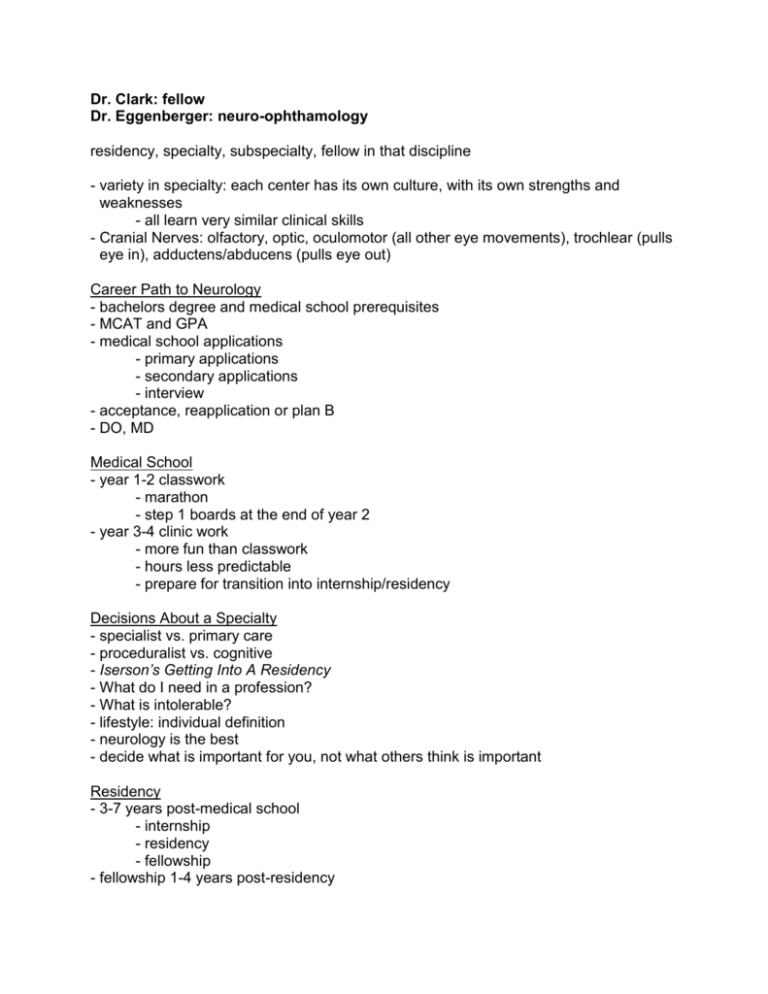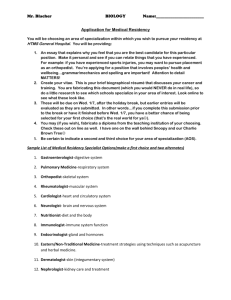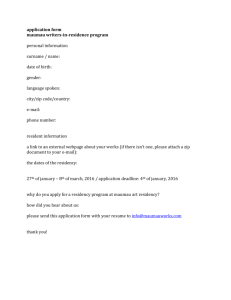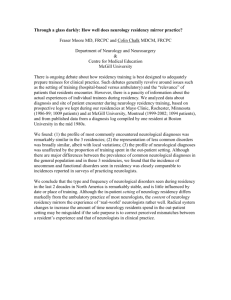Dr. Clark: fellow Dr. Eggenberger: neuro
advertisement

Dr. Clark: fellow Dr. Eggenberger: neuro-ophthamology residency, specialty, subspecialty, fellow in that discipline - variety in specialty: each center has its own culture, with its own strengths and weaknesses - all learn very similar clinical skills - Cranial Nerves: olfactory, optic, oculomotor (all other eye movements), trochlear (pulls eye in), adductens/abducens (pulls eye out) Career Path to Neurology - bachelors degree and medical school prerequisites - MCAT and GPA - medical school applications - primary applications - secondary applications - interview - acceptance, reapplication or plan B - DO, MD Medical School - year 1-2 classwork - marathon - step 1 boards at the end of year 2 - year 3-4 clinic work - more fun than classwork - hours less predictable - prepare for transition into internship/residency Decisions About a Specialty - specialist vs. primary care - proceduralist vs. cognitive - Iserson’s Getting Into A Residency - What do I need in a profession? - What is intolerable? - lifestyle: individual definition - neurology is the best - decide what is important for you, not what others think is important Residency - 3-7 years post-medical school - internship - residency - fellowship - fellowship 1-4 years post-residency - busy but doable (with balance) - new duty hour rules Adult Neurology- Fellowships - stroke +/- intervention - epilepsy - neurophysiology: EMG, EEG, sleep - MS - cognitive/dementia - peripheral nerve - motor neuron disease - headache - movement disorders - neuro-ophthalmology - neurocritical care - pain Job - private practice - hospital employed - academic research - area of neurology used to be just diagnoses, no treatment...but new research has provided more therapies and options 22 year old male with headache following a collision while playing basketball - over 12 days develops diplopia and right droopy eyelid - normal MRI - right eye: pupil is dilated, can’t adduct, can’t infraduct, can’t supraduct - 3rd cranial nerve palsy - angiogram (catheter from groin puts dye into blood vessels): showed aneurysm pushing on cranial nerve 3 - filled aneurysm with metal coils to block it off and form a clot to prevent rupture 69 year old male with pituitary macroadenoma (big benign tumor) - abrupt severe headache, then diplopia and blur - diplopia resolved over days - exam: 20/400 vision in right eye, even worse in left - left: droopy lid, can’t adduct, can’t supraduct, dilated pupil, blindness - MRI is read as stable - acute cavernous sinus syndrome: tumor bled into surroundings and compressed nerves Dr. Eggenberger’s Schedule Monday: MS, botox, vertigo Tuesday: neuro-ophthalmology (vision problems from brain issue) Thursday: neuro-ophthalmology





